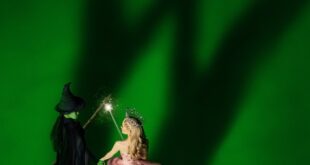The Spy Who Came in from the Cold is John le Carré’s third novel, named the “best spy novel of all-time” by Publishers Weekly in 2006. It is also the first film from adapted from his work. What stands out about Came in from the Cold is that in 1965 spies in entertainment were becoming all the rage during the Cold War with the likes of James Bond and numerous secret agents from TV shows, whose work on behalf of the West was unquestionably just and right. Here, the story contrasts that supposition with a more honest assessment of what spy agencies were doing. Also, the story is more important than creating a hero to lead a franchise.
At the Berlin Wall’s Checkpoint Charlie, a double agent working for Alec Leamas (Richard Burton) and British Intelligence, known as the Circus, is shot trying to cross the border. The blame is put on Leamas’ East German counterpart Hans-Dieter Mundt (Peter van Eyck), who came to London in 1959 pretending to work with British. Control (Cyril Cusack), the head of the Circus, seeks revenge and hatches a plan to catch Mundt.
Leamas appears to have been demoted, then leaves the Circus to take a job as a librarian. As his life spirals out of control overtures are made to sell British secrets, which he accepts. He is taken to safe houses where Mundt’s underling Fiedler (Oskar Werner) interrogates him. Leamas answers questions that implicate Mundt, but he denies the claim, which makes him look like a plant sent to cover for Mundt.
The screenwriters wisely stuck close to le Carré’s novel. As the story progresses, there are a number of believable plot twists that make sense once all is revealed to the viewer. Although hinted at, they weren’t obvious which allowed them to be nice surprises. Burton gives a great performance as Leamas, who himself had to give a great performance because his life depended on it. In particular, a sequence near the end where he likely speaks for le Carré in regards to the tactics of his government. For le Carré’s fans, George Smiley, the central character in five novels, has a smaller role in this story and is played by Rupert Davies.
The video was given a 1080p/MPEG-4 AVC encoded transfer displayed at an aspect ratio of 1.66:1. The booklet states, “the high-definition transfer was created on a Spirit DataCine from a 35 mm composite fine-grain master positive. Thousands of instances of dirt, debris, scratches, splices, warps, jitter, and flicker were manually removed suing MTI’s DRS and Pixel Farm’s PFClean, while Image Systems’ DVNR was used for small dirt, grain, and noise management.” Looking like a film noir, the blacks are extremely deep and crush when there’s a lot within the frame. The gray scale spectrum is well represented. Grain is muted. Other than a touch of banding from the lights at Checkpoint Charlie, the image looked rather pristine.
The audio is available as LPCM 2.0. The booklet also states, “the original stereo soundtrack was remastered at 24-bit from a 35mm optical soundtrack print. Clicks, thumps, hiss, and hum were manually removed using Pro Tools HD. Crackle was attenuated using AudioCube’s integrated workstation.” The dialogue is obviously dubbed at times and sounds hollow. The score comes through with great clarity, such as the piano playing, but it gets very loud at times like when Leamas leaves Kensington Station and during the burlesque show. In fact, it is slightly distracting because it sounds too clean and modern. The bass offers good support to the score and limited gunfire.
The features are “John le Carré” (HD, 39 min), an interview from 2008 with the author for Criterion. He talks about working on the film, the friction between director Martin Ritt and Burton, cast consideration like Burt Lancaster and Trevor Howard, and reveals what he likes and doesn’t like about the film. The Secret Centre: John Le Carré (1080i, 59 min) is a 2000 BBC biographical documentary about the author’s life. “Martin Ritt” (49 min) appears on audio from 1985 when Patrick McGilligan interviewed him about his career as an actor and director in theater, TV, and film. It’s heartbreaking to hear about him talk about dealing with the Hollywood blacklist. Cinematographer “Oswald Morris” (HD, 40 min), who also photographed 58 feature films like Lolita and Fiddler on the Roof, offers insightful selected-scene commentary. A gallery of “Set Designs” (HD) created by the art department is available to skip through. From 1967, “Acting in the 60’s: Richard Burton (1080i, 34 min)” finds Burton interviewed by critic Kenneth Tynan about subjects like his then-current feeling about the stage and being directed by Sir John Geilgud. He also recites some lines. There is a Trailer (1080i. 2 min), and the 16-page booklet includes the essay “True Ritt” by movie critic Michael Sragow.
The Criterion Collection’s The Spy Who Came in from the Cold is recommend as a Blu-ray worth investigating.
 Blogcritics The critical lens on today's culture & entertainment
Blogcritics The critical lens on today's culture & entertainment



